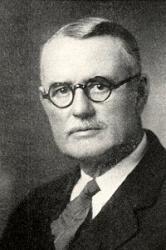Planning worship?
Check out our sister site, ZeteoSearch.org,
for 20+ additional resources related to your search.
- |
User Links
Search Results
What is That in Thine Hand?
Author: F. A. B. Appears in 5 hymnals First Line: What is that in thine hand, child, discouraged and sad? Used With Tune: [What is that in thine hand, child, discouraged and sad?]
What is That in Thine Hand?
[What is that in thine hand, child, discouraged and sad?]
Appears in 2 hymnals Composer and/or Arranger: F. A. Blackmer Tune Key: D Flat Major Incipit: 12333 54323 43556 Used With Text: What is That in Thine Hand?
[What is that in thine hand, child, discouraged and sad?]
What is That in Thine Hand?
Author: F. A. B. Hymnal: The Golden Sheaf #60 (1902) First Line: What is that in thine hand, child, discouraged and sad? Lyrics: 1 What is that in thine hand, child, discouraged and sad?
Surely God hath one talent at least to thee giv'n;
There is work thou canst do, that shall some soul make glad,
That shall help in advancing the kingdom of heaven.
Chorus:
What is that in thine hand?
What is that in thine hand?
Hidden talent, it may be, thou dost not understand;
What is that in thine hand?
What is that in thine hand?
With it God may work wonders, if thou heed his command.
2 It may not be to preach, that he calls thee to-day,
Or to publicly labor with tongue or with pen;
But it may be to work in a meek, quiet way,
Just as pleasing to God and effective to men. [Chorus]
3 If a cup of cold water to some suff'ring one,
A disciple shall give in the name of his Lord,
E'en so humble a service, if trustingly done,
Shall be blest of the Master and have its reward. [Chorus]
4 What is that in thine hand? brother, say not again,
"I've no talent and nothing for God can I do;"
Bring it forth from the "napkin" where long it hath lain,
Ask the Lord how to use it, and prove to him true. [Chorus] Tune Title: [What is that in thine hand, child, discouraged and sad?]
What is That in Thine Hand?
What is That in Thine Hand?
Author: F. A. B. Hymnal: The Revival No. 3 #117 (1899) First Line: What is that in thine hand, child, discouraged and sad? Languages: English Tune Title: [What is that in thine hand, child, discouraged and sad?]
What is That in Thine Hand?
What is that in thine hand
Author: Francis A. Blackmer Hymnal: The Golden Sheaf #d101 (1898)
What is that in thine hand
John R. Clements

1868 - 1946 Author of "What is that in thine hand" in Songs of Redemption and Praise John R. Clements was born in County Armagh, Ireland 28 November 1868 and was brought to the United States at the age of two years. He worked at the age of thirteen as a retail grocery clerk and had a successful wholesale grocery business. He began writing poetry when he was young.
Dianne Shapiro, from "The Singers and Their Songs: sketches of living gospel hymn writers" by Charles Hutchinson Gabriel (Chicago: The Rodeheaver Company, 1916)
John R. Clements
F. A. Blackmer
1855 - 1930 Person Name: F. A. B. Author of "What is That in Thine Hand?" in The Golden Sheaf Blackmer, Francis Augustus. (Ware, Massachusetts, February 17, 1855--October 8, 1930, Somerville, Massachusetts). Advent Christian musician. His parents, Augustus and Jane Blackmer, were among those caught up in the excitement of the Millerite Movement. One son, Fred, became an Advent Christian minister. Francis, with a talent recognized at an early age, consecrated his own life to Christian service as a musician. He was immersed in baptism at the Adventist campmeeting in Springfield, Massachusetts, by Elder Miles Grant.
His early years were spend in central Massachusetts, his schooling at Wilbraham Academy. He was largely self-taught in harmony and musical composition. He wrote the words and music to his first gospel song, "Out on the fathomless sea," at the age of sixteen. Altogether he wrote over 300 gospel songs about the Second Coming, witnessing and working for the Lord, and praises to God's Holy Name. A few of these have circulated widely outside his own denomination. His final text, "I shall see him, And be like him," came when he was so weak that his friend, Clarence M. Seamans, had to supply the music. He used the pseudonym, A. Francis, with some of his early songs.
Blackmer's first anthology was The Gospel Awakening, (1888). Subsequent gospel songbooks with which he was associated were: Singing by the Way (1895), Carols of Hope (1906), The Golden Sheaf, No. 2 (1916), and Songs of Coming Glory (1926).
Most of his adult life was spent in Somerville, Massachusetts, a suburb of Boston, where he had a prosperous piano business. In the 1890s, his "Francis A. Blackmer Pianos" were made for him by the Washington Hall Piano Company of Boston. Later, his "Good as Gold Pianos" were manufactured by the Christman Piano Company of New York City and shipped directly to his customers throughout New England.
In Somerville, Blackmer served as choirmaster and song-leader in the Advent Christian Church for many years. He was also an elder of the church until his death. From 1914 until his death, he was songleader at the mid-summer Alton Bay Campmeeting on Lake Winnepesaukee, New Hapshire. There his High Rock Hill was both a salesroom and a summer cottage over the years. He was a member of the board of directors of the campmeeting association for several years. Very popular were his singing sessions on the campground square between suppertim and evening services, and a final sing into the small hours of the night following the final service of the campmeeting.
--Leonard Ellinwood, DNAH Archives
F. A. Blackmer


 My Starred Hymns
My Starred Hymns

